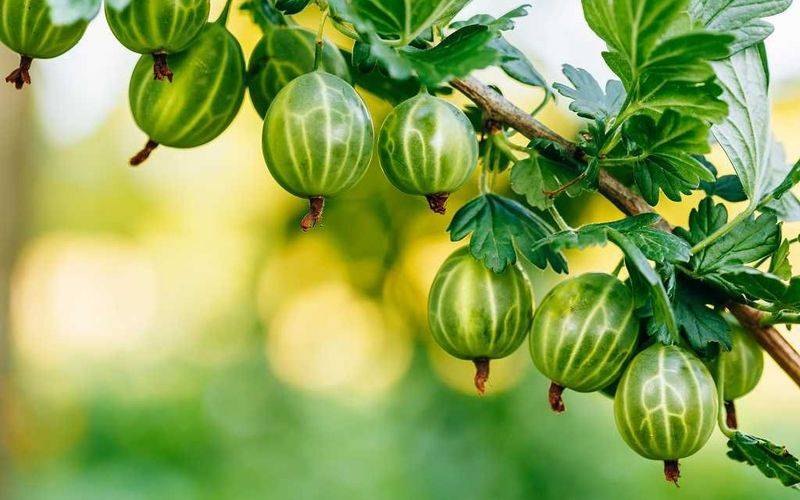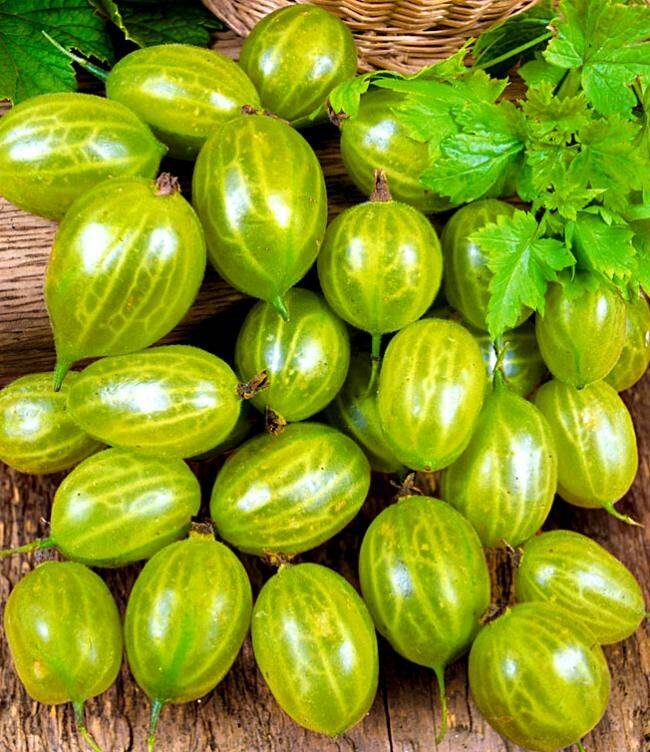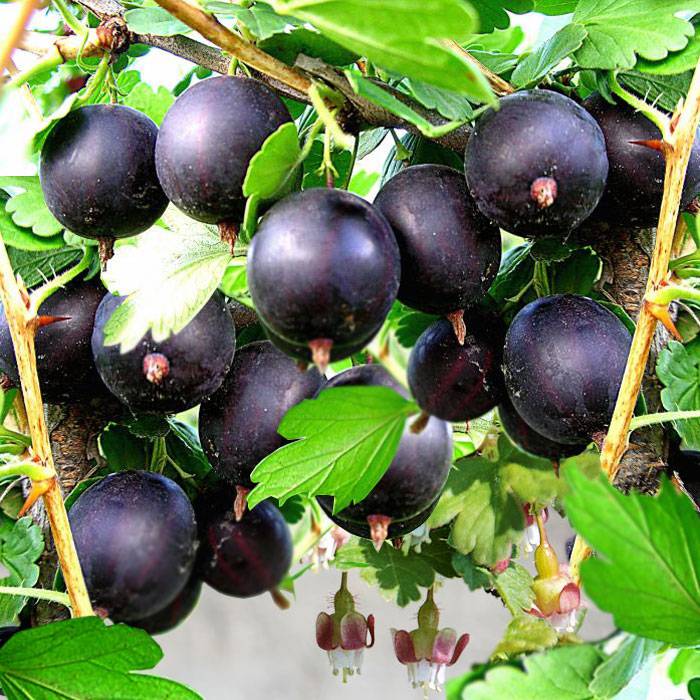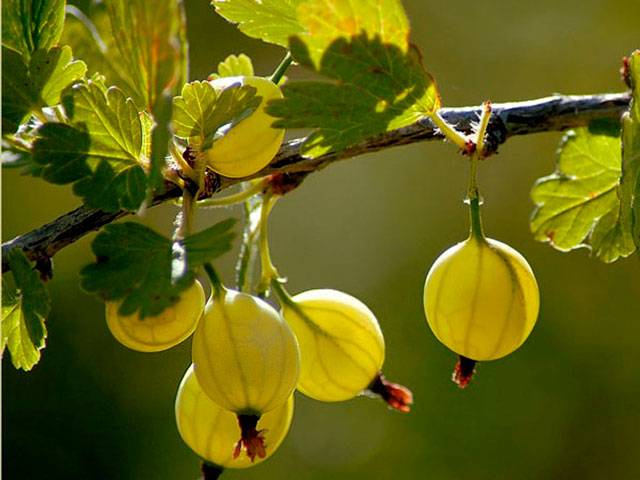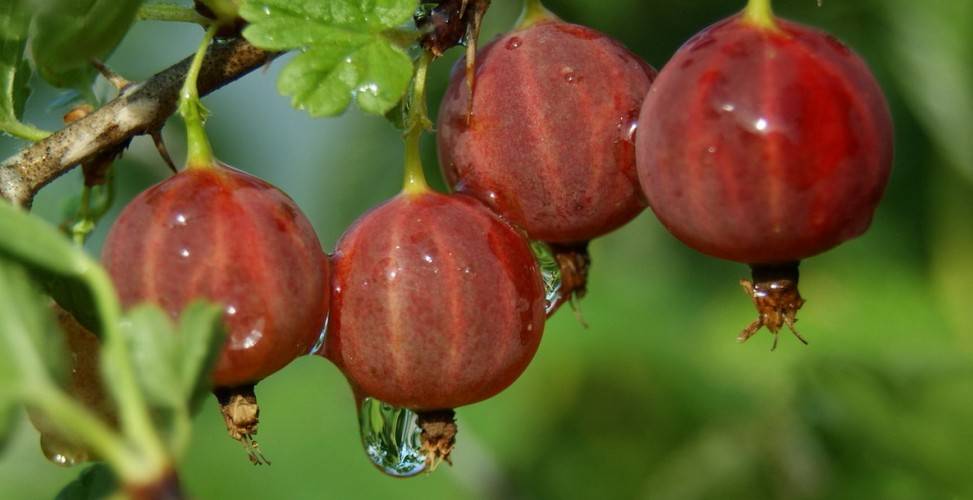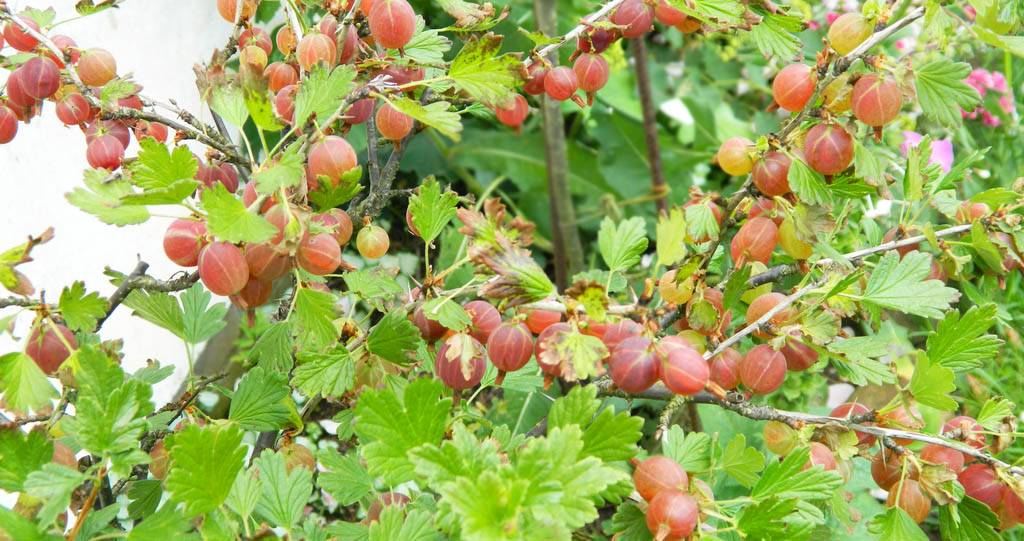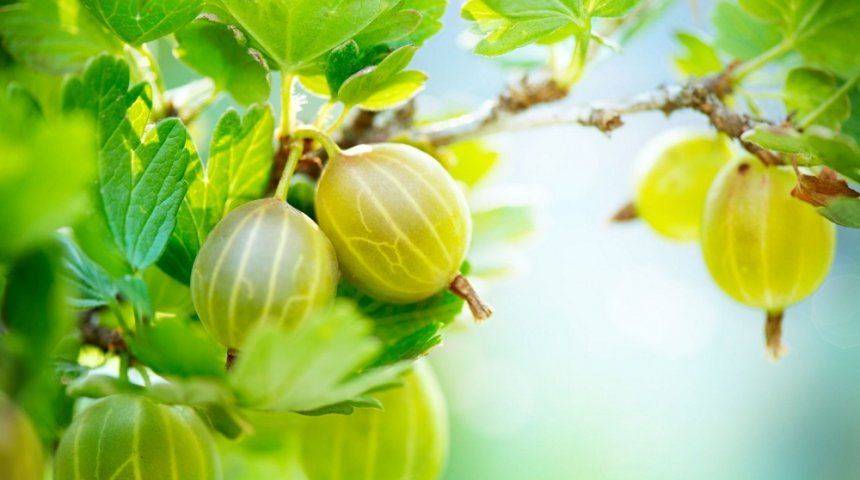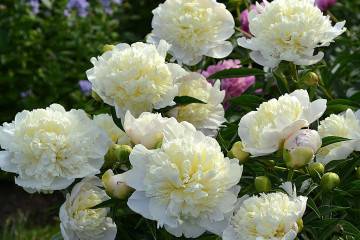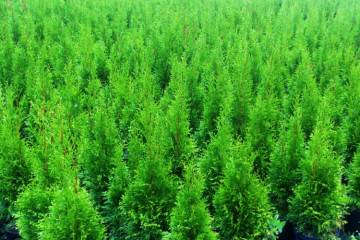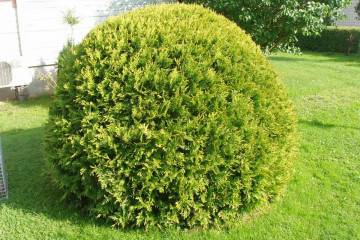Thornless gooseberries - characteristics of red and black varieties
Content:
Gooseberry fruits take pride of place among lovers of fruits and berries. Gooseberries have healthy and tasty berries, but picking them is a problem, since the branches of the bush are equipped with sharp thorns. Gooseberry varieties without thorns or with a small number of them on the branches were bred just for this purpose - to protect the clothes and hands of the gardener during the harvest.
The taste qualities of the berries of the thornless gooseberry varieties do not differ at all from their thorny counterparts. There is not much difference in the period of fruiting, yield and frost resistance. Some varieties of thornless gooseberries have a certain resistance to fungal attack. However, there are no completely thornless gooseberry varieties. The number and softness of thorns depend on weather conditions and agronomic characteristics. On young branches of thornless varieties, thorns are absent, but on old branches there may be, but in small quantities.
Breeding history
For its excellent taste, gooseberries are sometimes called grapes from the North. The fruits of the plant are rich in vitamins and minerals, as well as pectin. The maximum yield per bush can reach 15 kg. But thorns during harvest and powdery mildew are a real problem for gardeners. Breeders set to work using North American gooseberry varieties, and obtained varieties devoid of thorns and practically not exposed to such a scourge as powdery mildew.
Characteristics and descriptions of the best representatives of the species
Thornless gooseberries are a tasty and healthy berry. All modern bred varieties of this plant without thorns have a number of their own characteristic features. The main ones are:
- black-fruited;
- red-fruited;
- green.
Black-fruited
These varieties got their name from the color of the berries. Grushenka is a striking representative of the black-fruited variety of the thornless gooseberry. The berries of the plant are large, pear-shaped. The color is black and purple, and the pulp is sweet and sour. Ripe fruits have a pronounced aroma.
The second representative of black-fruited thornless varieties is Eaglet. Ripe fruits are black, their shape is round. There is a resemblance to black currant. Taste qualities are excellent, sweet and sour aftertaste is expressed. The variety is resistant to frost and powdery mildew.
The bush itself is tall, has a small number of thorns in the lower part. Leaves are rich green.
Another representative of black-fruited varieties is the Northern Captain. Suitable for making homemade drinks, including alcoholic ones. The value of this type of thornless gooseberry is good winter hardiness.
Red-fruited
The representative of the red-fruited varieties devoid of thorns is Kolobok. Obtained as a result of crossing a pink variety and Smena. Differs in rapid maturation. Does not tolerate sudden temperature changes.
Fruits are round, dark red in color. The bush requires regular pruning, as it is quite tall.
High red-fruited gooseberry variety without thorns Consul. Possesses good productivity. The fruit tastes sour with a slight sweetness. It is resistant to powdery mildew and septoria.
The red thornless gooseberry is a Sirius variety with excellent yield and frost resistance. It also resists powdery mildew well. Berries of the Sirius variety are small, rounded and bright red in color. The pulp is tender and sweetish-sour.
Green
Tall, not thorny gooseberry - Ural thornless. Has many branches intertwining with each other. The thorns on the bush are small and rare. The berries are light green and the flesh has an unusual taste. For this, the Ural Besshorny has established itself for the preparation of compotes and preserves.
The sweetest
The sweetest varieties are Uralsky Besshipny and Kolobok. There are few thorns on these bushes, and resistance to fungal infections is high. Both varieties are quite tall and require regular pruning. Unlike the Ural variety, Kolobok cannot boast of special resistance to temperature extremes, therefore it grows widely in the southern regions.
The most productive
The most productive varieties of gooseberries with a small number of thorns are the Northern Captain, Sirius and Ogni Krasnodar. The North Captain variety gives a very large harvest for the entire season. It is actively grown in Russia, even in remote areas of Siberia. In addition to the above qualities, this dark berry gooseberry variety produces a large harvest. It grows well in the Moscow region and Central Russia.
The Sirius variety also gives a large yield, despite the fact that the fruits are not particularly large in size. It has a sweet and sour taste, is not afraid of frost and fungal diseases. Fruit ripening occurs in the middle of summer.
General advantages and disadvantages
Some gardeners claim that thorny gooseberry varieties yield more fruits, and they are much tastier than their thornless relatives. In fact, the flavor of any gooseberry depends on the variety. Some have a sour taste, others sweet and aromatic.
Drought resistance, frost resistance
In the course of breeding work, the crossing of certain varieties of thorny gooseberries gave unexpected results. In addition to resistance to powdery mildew and many other fungal diseases, thornless gooseberry varieties have good resistance to frost and temperature extremes.
Productivity and fruiting
Productivity and fruiting also depend on the variety, and not on the number of thorns on the bush. Some varieties of gooseberries without thorns (for example, Sirius, Northern Captain, Kolobok) give an excellent harvest per season.
Scope of the fruit
Gooseberries are used to make jams, preserves, compotes and even alcoholic beverages. The area of application may differ depending on the grade. So, the Orlyonok variety, belonging to the black-fruited species, is used to make homemade wine or tinctures. The Uralsky besshorny variety has green fruits and sour-sweet pulp; it is used for making compotes and jam.
Disease and pest resistance
Thanks to breeding work, thornless gooseberry varieties are practically unaffected by fungal diseases such as powdery mildew. But with improper care and adverse weather conditions, gooseberry bushes can be exposed to anthracnose, goblet rust, aphid, sawfly, gooseberry moth. It is worth remembering this and always closely monitor the condition of the bushes.
Landing rules
All varieties of crops are plants that do not tolerate close bedding of groundwater. On swampy soils, not a single gooseberry will grow normally. It is recommended to drain the soil well before planting.
Recommended timing
It is recommended to plant thornless gooseberries in the spring or autumn. Gardeners recommend planting plants in the fall, since a small bush adapts well and hardens in winter, gradually being exposed to low temperatures. Some summer residents claim that a plant planted in the spring has the ability to grow strong roots and go into hibernation strong.
Choosing the right place
As already mentioned, gooseberries do not like soil with a high level of groundwater (waterlogged), therefore, a place for planting must be selected carefully. Lighting is an important condition for the normal development of the bush and its further successful fruiting. The gooseberry loves the sun, but the area must be protected from drafts.
Landing algorithm
To plant the selected bush, you need to prepare a hole about 30 cm deep. This must be done not before boarding, but in advance. For example, if planting is planned in the spring, the pit is prepared in the fall.
The following is the algorithm:
- A special mixture is placed on the bottom of the prepared pit. This nutritional composition will allow the gooseberries to take root better. The mixture contains straw manure, wood ash or potash salt and lime powder.
- Next, the plant is planted. The bush is buried so that the root collar is 6 cm below ground level. The lower branches can also be sprinkled with earth. This will allow the gooseberries to take root better.
- During planting, the seedling must be placed vertically. After that, the pit is filled up, the kidney is compacted (trampled) and watered. Mulch (peat or humus) can be used to retain additional moisture around the trunk.
Follow-up care
Gooseberry is a slow-growing plant. In volume, the bushes do not grow quickly, but already in the second year they can give a relatively good harvest. To increase it, it is important to regularly water the bushes, but so that there is no excess moisture. You need to be careful about the plant during the dead period and 14 days before the start of the harvest.
Diseases and pests, methods of control and prevention
Depending on the conditions of keeping, thornless gooseberry varieties, despite their resistance, can be exposed to pests or diseases. Major diseases and parasites:
- anthracnose. It is characterized by the appearance of irregular brown spots. They are scattered throughout the leaves, and over time they begin to pour in. To combat anthracnose in early spring, the soil around the plant is sprayed with 1% copper sulfate. Colloidal sulfur can be used. It is diluted in a proportion of 30 g per 10 liters of water;
- goblet rust occurs on leaves and fruits. It resembles stains in the form of orange glasses. The fight against goblet rust is carried out by spraying the bushes before the beginning of the flowering period and after picking the berries. The disease is treated with copper oxychloride in a ratio of 40 g per 10 liters of water;
- aphid. It manifests itself in the form of curling leaves at the ends. As a rule, young shoots are affected. To destroy and prevent the appearance of aphids, they are treated with 3% karbofos or soapy water;
- gooseberry moth is a parasite that damages berries. They begin to ripen early, blush. The entire brush with berries can be covered with cobwebs, and in one of the berries there is a pest - a caterpillar. When fighting this parasite, you need to be patient. The collection is carried out by hand, destroying the caterpillars. As a preventive measure in the autumn, it is necessary to huddle the earth around the bush. Before and after the flowering period, spraying with karbofos is carried out.
Gooseberries and, in particular, their fruits take their place of honor among berry lovers. The fruits of the plant have a whole range of useful trace elements and vitamins. But harvesting from the bush is a problem, since each branch has tenacious thorns. Breeders in the course of crosses received gooseberry varieties devoid of a large number of thorns.
Thornless gooseberry varieties do not differ at all from thorny ones in terms of planting principles and frost resistance (it all depends on the area). The flavoring qualities of the berries also did not undergo any special changes during the selection. Therefore, each gardener decides for himself whether to buy seedlings of these types or not.
